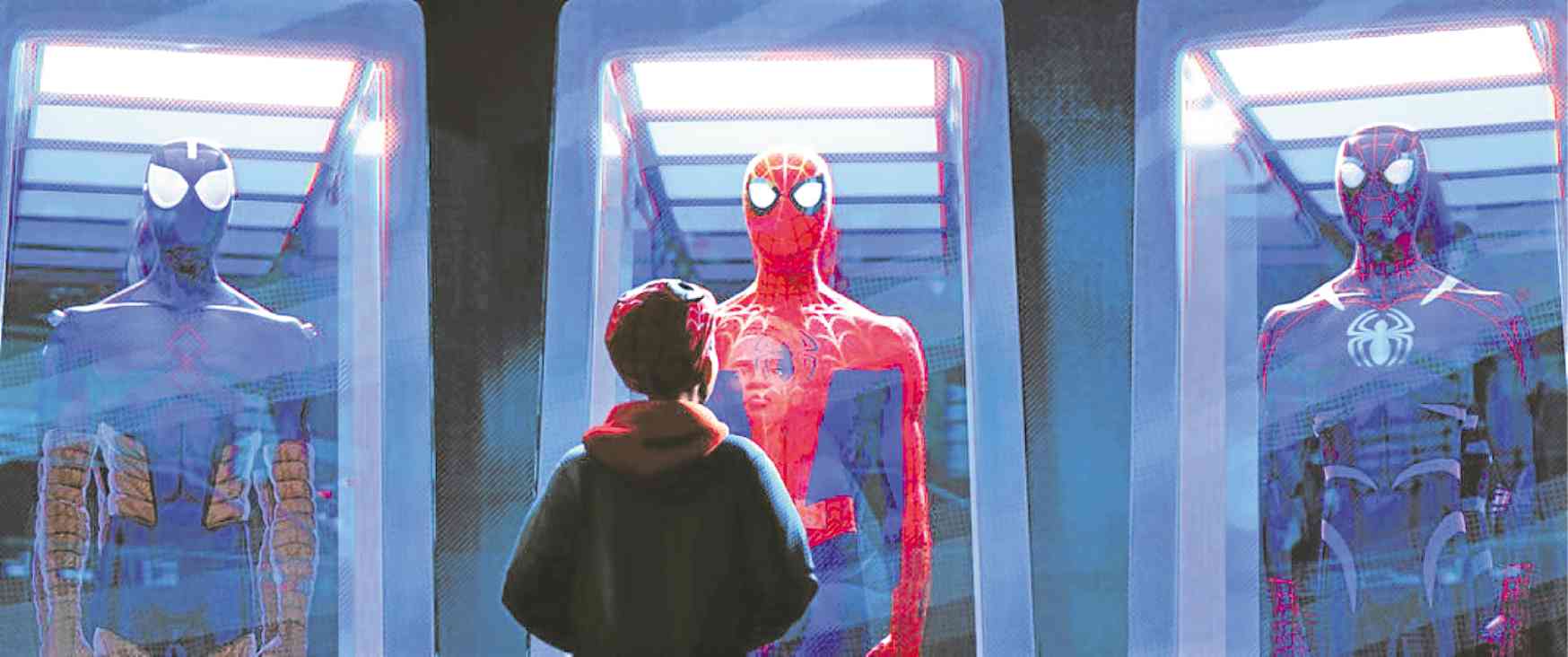Fil-Ams among animators behind dazzling ‘Spider-Verse’
LOS ANGELES—“Spider-Man: Into the Spider-Verse” is this year’s dazzling cinematic surprise—it’s the best “Spider-Man” movie in a long while. This animated superhero movie is a mind-bending, thrilling mix of 2D and 3D wizardry.
I will let you discover and enjoy how different Spider-“Men” from parallel dimensions get thrown together in the gritty, richly diverse world of this “Spider-Man.”
Just get ready to enjoy the ride with the main Spidey, Afro-Latino high school student Miles Morales (Shameik Moore) from Brooklyn. Along the exciting way, meet these other alternate-reality Spider-“Men”: Spider-Woman/Gwen Stacy (Fil-Am Hailee Steinfeld), anime Spider-Girl/Peni Parker (Kimiko Glenn), Spider-Man Noir (Nicolas Cage) and Spider-Ham named Peter Porker (John Mulaney).
The brilliant cast of voice talents also includes: Zoe Kravitz, Chris Pine, Mahershala Ali, Kathryn Hahn, Liev Schreiber, Oscar Isaac and Lily Tomlin.
This highly inventive “Spider-Verse” comes from three directors—Bob Persichetti, Peter Ramsey and Rodney Rothman. The latter also wrote the screenplay with Phil Lord.
Among the Filipino-American animators who lent their creative artistry to “Spider-Verse” are Louie del Carmen, Ryan Rubi and John Butiu.
Excerpts from my interview:
What specifically was your contribution to the film?
Louie del Carmen (L): I was a story artist, and the first one to do exploratory storyboarding on the film. This was crucial in developing not only a storyboarding style, but to help define the film language and overall tone of the movie.
Ryan Rubi (R): I mostly did shot work and early stage development of assets for the movie before they went into sequences and shots. I also maintained those assets from start until the end of the project. To make it simple, I designed and built clothes, hair and muscle setup for certain characters and made them move!
John Butiu (J): I worked on the 3D models and helped design the different environments/locations in the film, such as modeling Aunt May’s house/neighborhood, miscellaneous buildings in Brooklyn, Queens, brownstone and industrial buildings, as well as the high school that Miles Morales goes to.
Since this is a hybrid of hand-drawn and CG animation, the movie took longer and was more complicated to make. How was that more challenging on your part?
L: I was given a lot of freedom to experiment since we were in the early stages, but it was clear that even with that freedom, there needed to be a conscious effort to preserve the “comic book” look in a graphical sense. I actually spent a lot of time looking at 2D references, instead of 3D to help maintain that way of thinking.
J: On my part, it was slightly challenging because I had to give it a hand-drawn comic book look and feel, like having dark outlines on the characters and objects, which were actual 3D geometry. Additional geometry was created to simulate highlights/outlines.
It was a bit more challenging because it wasn’t simply just modeling the object … We had to model more parts of the shadows and highlights.
The 2D hand-drawn scenes were done by 2D artists, and it was quite a long process for them.
How do you, as an artist of color, relate with the racially diverse characters, especially with this Spider-Man/Miles Morales?
L: Thematically, the message of the movie is quite universal; that the hero resides in every one [of us]. A strong family bond is also something inherent in all cultures. I related to Miles because he is someone who is just trying to cope with society and is given a monumental choice. If you choose to be great, then you and your talent can’t be denied.
R: Working in the animation industry has exposed me to a racially diverse community. When I first moved overseas, I worked at Lucasfilm with 40 nationalities from around the world … where I learned a lot about so many different cultures.
J: It is exciting to see all this diversity coming to animation and live-action movies.
Seeing different characters lets people know that everyone is different and opens their eyes to different cultures as opposed to your typical “Hollywood” movies where there is no diversity with the characters and actors. It’s a good feeling to see kids say, “Hey, I can be a superhero, too!”

High school student Miles Morales is one of the heroes in “Spider-Man: Into the Spider-Verse.” —SONY PICTURES
Stan Lee, who recently passed away, made one of his famous cameos in the movie, probably one of his last—but in animation. How did Stan Lee influence and inspire you?
L: My favorite bonus of reading Marvel comics when I was growing up was getting to read “Stan’s Mailbag,” where he would answer letters from readers. His affable personality and sharp wit came through those pages.
What I take away from his work is his ability to balance fun character aspects with real, relatable conflict. It made Marvel stand out; you can have intense action and adventure, but the characters feel like real human beings.
R: Growing up reading Marvel comics helped broaden my imagination as a kid. Stan Lee made a huge impact not just in the animation industry, but also in the visual effects field.
J: I’m very happy that Stan Lee will be making a cameo in this film. I will be taking my wife and kids to the theaters when it comes out.
Stan Lee had a big influence on my life as I grew up reading Spider-Man comics and watching Spider-Man TV shows … [He] helped show me what it is to be a hero—by caring and helping others, never giving up and keeping away from bad influences/bullies as I was bullied and teased as a Filipino kid in a mostly white neighborhood in a small town in Washington state.
E-mail rvnepales_5585@yahoo.com. Follow him at https://twitter.com/nepalesruben.


